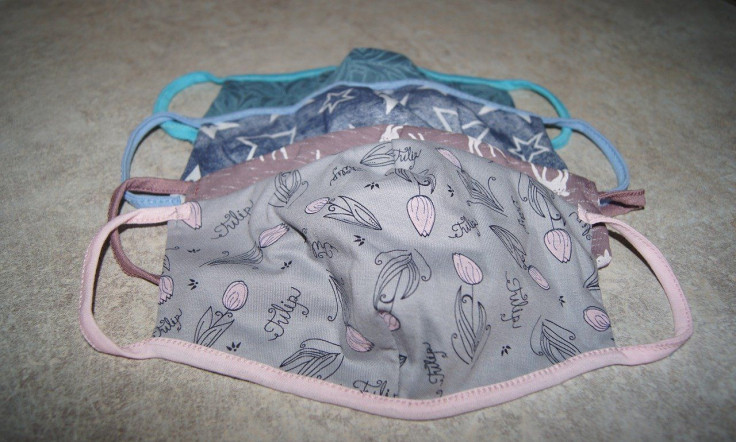Homemade Face Masks: Study Says Multiple Layers Are Needed To Provide Protection
KEY POINTS
- Researchers found two layers of clothing is better than just a single-layered face mask
- The most effective one is a three-ply surgical face mask
- Researchers, however, did add a single-layer face mask is better than going out without any
People who want to make their own masks most likely would need several layers of clothing for such face-covering to be effective, a study suggested.
A homemade cloth face mask would likely require two to three layers of the material to stop viral droplets or particles from being ejected into the air. Researchers reached this conclusion during an observational study looking into the efficacy of homemade masks at the University of New South Wales in Australia.
According to the study, the most effective face covering that minimizes dispersal of airborne droplets is a three-ply surgical face mask. A single-layer covering minimized the spread of droplets generated when speaking, but a double-layer covering fared better in reducing droplets produced when sneezing and coughing, said a CNBC report citing the study.

In the case of homemade masks, two or three layers of clothing were effective in stopping the droplets from spreading. They published their findings Thursday, July 9, in the medical journal Thorax.
Researchers examined the efficacy of single- and double-layer cloth face masks in minimizing the spread of respiratory droplets, which are produced when an infected individual coughs, sneezes, or even just speaks. They then compared the outcome with results obtained in the case of three-ply surgical face masks.
To find out, the researchers used a high-speed camera and LED lighting to record airborne droplet dispersion from a healthy person without any respiratory infection. The footage for speaking was recorded at 850 frames per second. On the other hand, sneezing and coughing were filmed at 1,000 frames per second because of the greater expulsion speeds, the researchers explained.
They used a folded piece of cotton shirt and some hair ties to craft a single layer face mask. In the case of the double-layer mask, the investigators adhered to the sewing process recommended by the Centers for Disease Control and Prevention (CDC). Researchers then used tissue paper to stimulate the nasal cavity's mucus membrane and provoke a sneeze.
After conducting the experiment and reviewing the film, they concluded a cloth face-covering composed of at least two layers of the fabric is better compared to a single-layered one.
"Guidelines on home-made cloth masks should stipulate multiple layers," wrote Prateek Bahl, lead author of the study and a School of Mechanical and Manufacturing Engineering Ph.D. candidate at UNSW.
While a single-layer face mask is less efficient compared to multiple layers, it is better than going out without any face mask at all, researchers added. Other factors that affect the effectiveness of cloth masks include the type of material used, washing frequency, and arrangement of various layers.
© Copyright IBTimes 2024. All rights reserved.





















